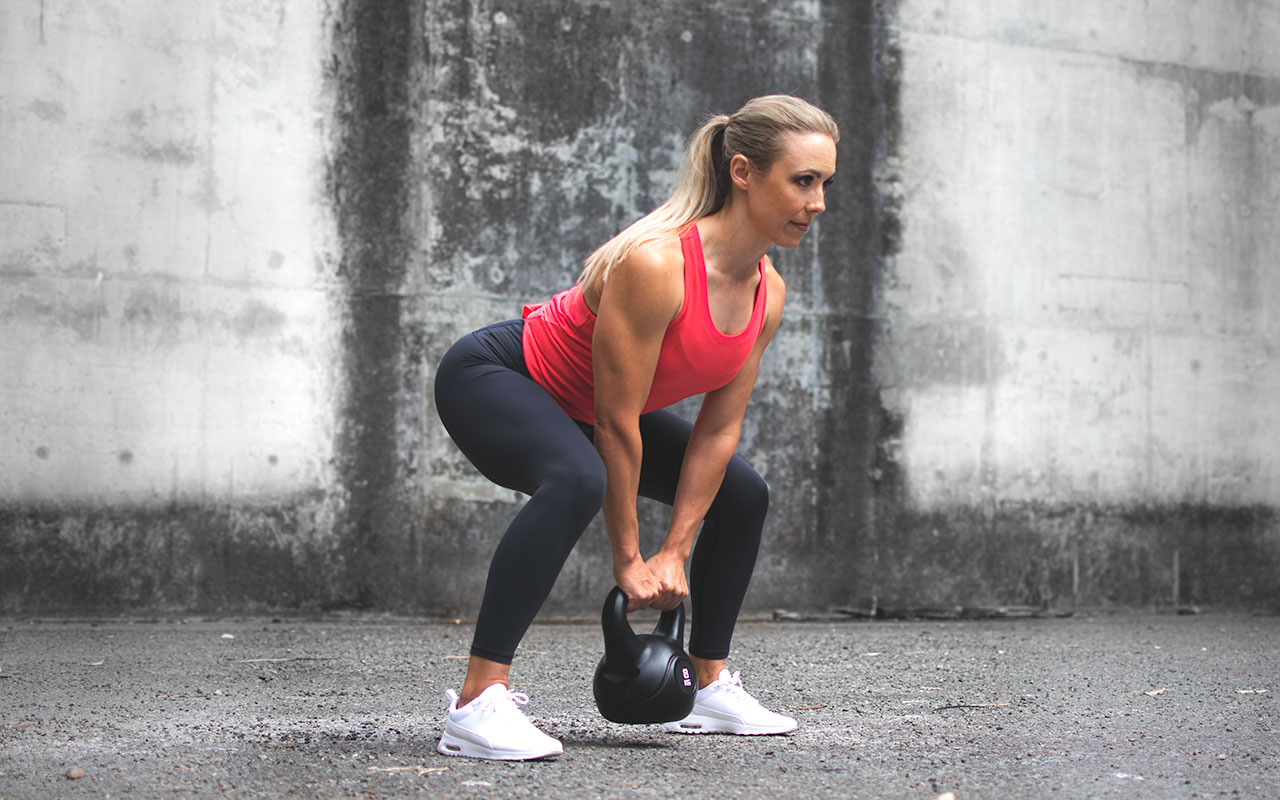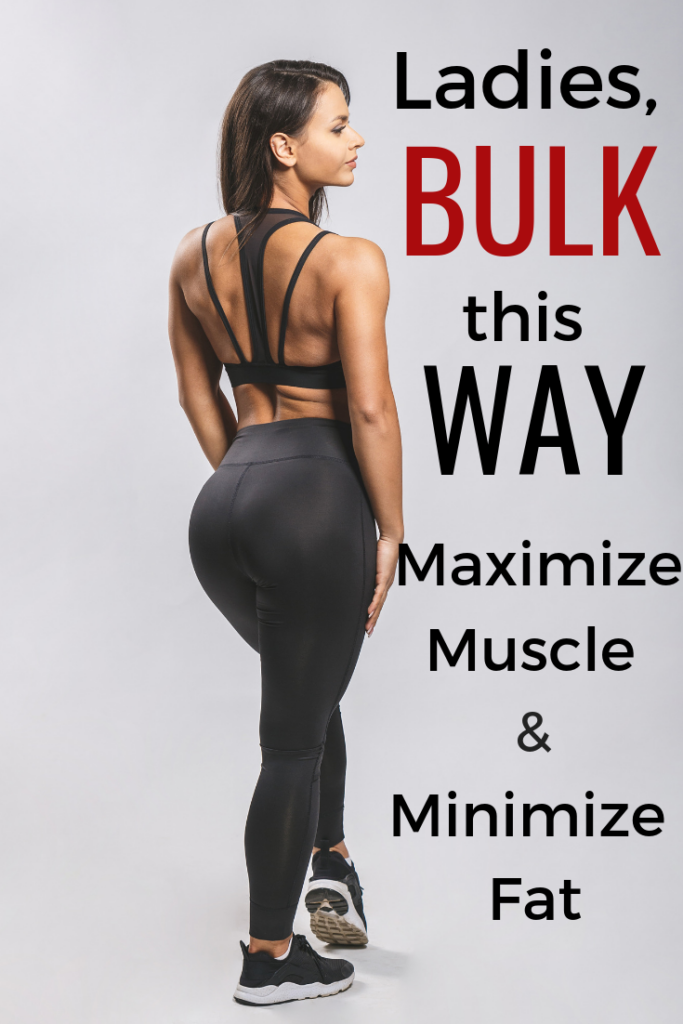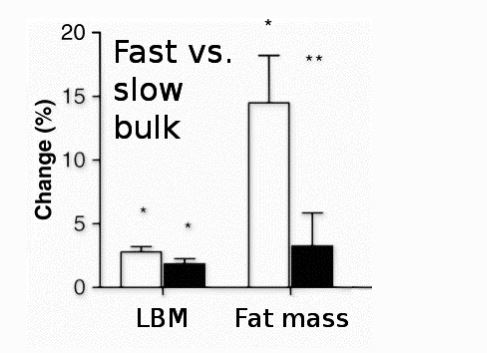
BULKING for Women
Bulking for Women: Everything You Need to Know to Start Bulking
Ladies, muscle doesn’t appear from air. If your goal is to gain more muscle you need to eat enough calories to support muscle growth. Eating more may seem scary but it doesn’t always have to be that way, bulking has though me to enjoy food and to not be so stressed about everything I am eating. I have learned to embrace bulking and I would love to share my personal experience and how I have been able to gain muscle while minimizing fat gain.
Important: Is your Body Ready to Bulk?
Before moving into specifics the first thing I would like to address is body fat percentage. Why? Because your body fat percentage is a HUGE factor in determining how much body fat you will gain on a bulk. If your current body fat percentage is over 20-21% I HIGHLY RECOMMEND for you to lower your body fat percentage down to this range BEFORE considering a bulk.
This is something I wish I would have known before because it would have saved me unnecessary fat gain and long cutting cycles.
Let me explain when you have a lower body fat percentage you have a higher tolerance to insulin. This allows you to bulk for longer periods of time. On the other hand, when you have a higher body fat percentage your insulin sensitivity decreases causing you to burn less fat and increase your chances of gaining more fat than necessary, which also causes protein synthesis to decrease minimizing muscle growth.
So, ladies if you’re scared to start a bulk because you don’t want to gain fat then I recommend you to get your body fat percentage down to 20-21% before moving on. I highly recommend for you to use a body fat caliper to measure your body fat percentage, not only are they super cheap but it is one of the most effective ways to measure body fat, I got mine from Amazon for less than $15.
Another way to determine your body fat percentage is by simply looking at a mirror if you can see your abs then your good to go below is an illustration to help you get a better Idea.

What is Bulking?
Bulking is eating at a caloric surplus, with the purpose of gaining weight. It’s the complete opposite of cutting were you are on a caloric deficient and are burning more calories than you are consuming to allow your body to use your body fat reserves instead.
There are 2 types of bulking methods: dirty bulking and lean bulking, both are effective but what differentiates them is the amount of fat you will gain with the muscle.

Dirty Bulk
Dirty bulking is the more traditional way of bulking it is basically eating more than your body needs. Dirty bulking also doesn’t mean you can eat anything and everything, it consists of consuming a greater caloric surplus, greater than 500 calories. In the process of dirty bulking, you are more likely to gain more fat than muscle.
Often times dirty bulking is not recommended because it causes rapid weight gain, allowing you to bulk for very little time before you have to cut down again. Gaining more fat accelerates fat storage and slows down muscle growth.
Lean Bulking
Lean bulking is eating at a SLIGHT caloric surplus of about 5-10% increase. A slight caloric surplus allows you to gain small amounts of fat, preventing you from gaining too much in a short period of time. This method also allows you to bulk for a longer period of time, maximizing muscle growth and minimize fat gain. With lean bulking, you are only eating ENOUGH for your body to support recovery and growth. You can only gain so much muscle in one day, giving your body an excess amount of calories won’t speed up the process instead the excess energy will just be stored as fat.
TIP: Women are more likely to store more fat than men, so it’s best for women to stick to the lower end of the range (5%).
Dirty Bulking vs Lean Bulking
Regardless of the bulking method, you use both will help you achieve muscle growth.
The figure below from a study compares a dirty bulk group and lean bulk group. Both groups gained a similar amount of muscle but the dirty bulk group gained a lot more fat than the lean group.

Above all to get the most benefits out of bulking lean bulking is the recommended method, a slight caloric increase is equally as effective for building muscle as a larger one.
Dirty Bulking vs Lean Bulking: My Experience
Personally, I have tested both methods and while I gained muscle with both methods my dirty bulk only lasted about 3.5 months because I got very uncomfortable with the amount of fat I had gained (see below). On the other hand, I have been able to sustain my lean bulk for 5 months now!! and still feel comfortable enough to go on another month! Here is a picture I want to share with you to illustrate my personal experience. On the left I was 3 months in my bulk on the right I was 4 months in my bulk. You can see that I clearly gained a lot more body fat at a much FASTER rate during my last bulk were I used the dirty bulking method.

What to Expect
Regardless of the method you choose, you must keep in mind that fat gain is inevitable with either method. Lean bulking just allows you to gain it in a longer stretch of time before considering a cut.
Starting your Bulk
Once you hit 20-21% body fat slowly start increasing your calories. The first 2 weeks you will want to start consuming enough calories to maintain. This will prevent rapid fat gain and should be the first step before moving into a caloric surplus. This also gives your stomach some time to adapt to eating more food.
Start Slow
As you start to bulk, start at the lower range (5%) for 1-2 weeks and see how your body responds from there and tweak it as you. If you’re not gaining enough weight then increase your calories by 100. On the other hand, if your gaining weight to fast than lower your calories by 100 and so forth.
Remember that your weight can fluctuate daily one day by 2 pounds more and other days by 2 pounds less. Don’t make any changes to your diet if this happens, instead track your weight daily and average your weight each week and see how it progresses over a longer period of time.
How much Weight Should I be Gaining
On average, women should expect to gain about 0.25 – 0.5 pound per week. However, beginners will typically gain more weight than someone that has been training for 4+ years and has gained a good amount of muscle over that time span. Beginners can gain up to 1 pound per week, while intermediate and advanced will most likely stay within the 0.25-0.5lb per week.
I highly recommend for you to track your weight daily because this is the only indicator that allows you to stay on track. Keeping a record of your weight lets you know if you’re not eating enough or if you’re eating too much.
If you are in search of a cheap and reliable scale here is the link to the one I use on a daily basis.
Something to Consider
On average:
- Women can gain 8-13 pounds of muscle in their FIRST year of lifting.
- Women can gain 4-7 pounds of muscle in their SECOND year of lifting
- Women can gain 2-3 pounds of muscle in their THIRD year of lifting, and 1-2 pounds after each consecutive year.
Not Gaining Enough Weight?
If you are following all the rules in the game and you’re still not gaining enough weight, all you have to simply do is eat more girl!
Increase your calorie intake by 100, increasing your carb intake. Carbs contain 4 calories per gram so this equates to 25g of carbs.
How long Should I Bulk?
As for how long, focus less on time and more on your body fat percentage. Once you reach a body fat percentage of 25-27%, its time to stop bulking and time to start cutting your body fat percentage back down to 20-21%.
If you are lean bulking correctly, it can take several months to reach a 5% body fat increase.
Repeat this process until you feel satisfied with the amount of muscle you have gained in your cutting phase. After you reach this point than you would just focus on eating enough calories to maintain your physique. But before reaching this point, throughout the year, you will either be on a bulking or a cutting phase.
Continually transitioning between a bulking and a cutting cycle helps you stay lean while you focus on improving the weak points in your physique. In short, lean bulking allows you to look good all year round!
Workouts & Rest Days
Your workouts should consist of compound movements with some isolation exercises and depending on your physique goals. Progressive overload will be a key part of your workouts, doing this will assure that you are progressing and getting stronger in all your main lifts. Luckily have put together a bulking workout plan for women where I go more in-depth. Check out my post: Lean Bulking Workout Plan for Women for more details on this topic.
On rest days there is no energy being expended for training. Therefore, you should eat enough calories to maintain.
Setting Calories and Macros
To determine you’re nutritional needs you’ll first need to figure out your total calories.
Calories
The first step is to figure out your TDEE – total daily energy expenditure is also known as your maintenance calories. To figure out your TDEE you can use the formula down below:
Women BMR = 655 + (9.6 X weight in kg) + (1.8 x height in cm) – (4.7 x age in yrs)
TDEE = BMR x Activity Factor
Sedentary – 1.2
Lightly Active – 1.375
Moderately Active – 1.55
Very Active – 1.725
Extremely Active – 1.9
After you know what your TDEE is the next step is to multiply that by 5-10% and this will give you the ideal range of calories to stick to.
Macros
Now that you know your calories it’s time to determine your macronutrients and it’s really quite simple.
Protein
Protein plays a major role in maintaining and growing muscle. Therefore, anytime you are trying to build muscle you need to make sure you are eating enough protein. Protein is the one macro you want to meet daily and keep the most track of.
The recommended amount of protein intake is 1g of protein per lb of bodyweight.
Formulaà Bodyweight (lbs.) / 1 = Protein Intake per day
Fat
Fat provides essential fatty acids and fat-soluble vitamins beneficial for your health. Therefore, your diet should provide a moderate amount of fat. The American College of Sports Medicine recommends an intake of 0.3– 0.5g of fat per pound. However, it is important to note that women perform better with a higher fat range.
Compared to men a women’s body differs in terms of hormones, fat mass, and muscle mass. In general, a women’s body prefers to use fewer carbs and more fat when working out as fuel. A females sex hormones – estrogen and progestogen increase the reliance on fat as fuel and therefore have larger amounts of intramuscular fat stores.
Carbohydrates
Carbohydrates should make up the remainder of your calories.
Example: Calculating a Lean Bulking Plan
To get give you a better idea, I will use myself as an example to set up a diet based on what we previously discussed:
130LB Female
Total Calories: TDEE= 2,031 2,031 x 0.05 = 102 total calorie increase (lower range increase – 5%)
2,031 x 0.10 = 203 total calorie increase (higher range increase – 10%)
Total Calorie Range: 2,133 – 2234 total calories
Protein: 130 x 1 = 130g per day (130g x 4 = 520 calories, protein contains 4 calories per gram)
Fat: 130 x 0.5 = 65g per day (65g x 9 = 585 calories, fat contains 9 calories per gram)
Carbs: (Calories left) 2,133 total calories – 520 calories from protein – 585 calories from fat = 1,028 calories from carbs à 1,028 calories from carbs / 4 = 257g carbs, carbs also contain 4 calories per gram
GOAL: 2,133 total calories: 130g of protein/ 65g of fat/ 257g of carbs
And there it is, the perfect diet optimized to help you gain some nice gains!
If you want more details about setting a bulking diet and meal plan, make sure to check out my post on how to create a bulking meal plan for women.
Bottom Line
Start Lean: Your body fat percentage is a HUGE factor in determining how much body fat you will gain on a bulk, Aim to start at 20-21% bf
Implement only a slight caloric surplus: Bulking doesn’t mean you need to increase your calories by a huge amount, all you need to do is eat ENOUGH for your body
Don’t allow your body fat% to get too high: Consider a cutting cycle once you hit 25-26%
Keep track: Keep track of your weight to make sure you are gaining the proper weight each week/month
Building Muscle Takes Time: Be consistent and stay patient, and the result will follow.
More to read: Maximizing your CPAP machines to the fullest